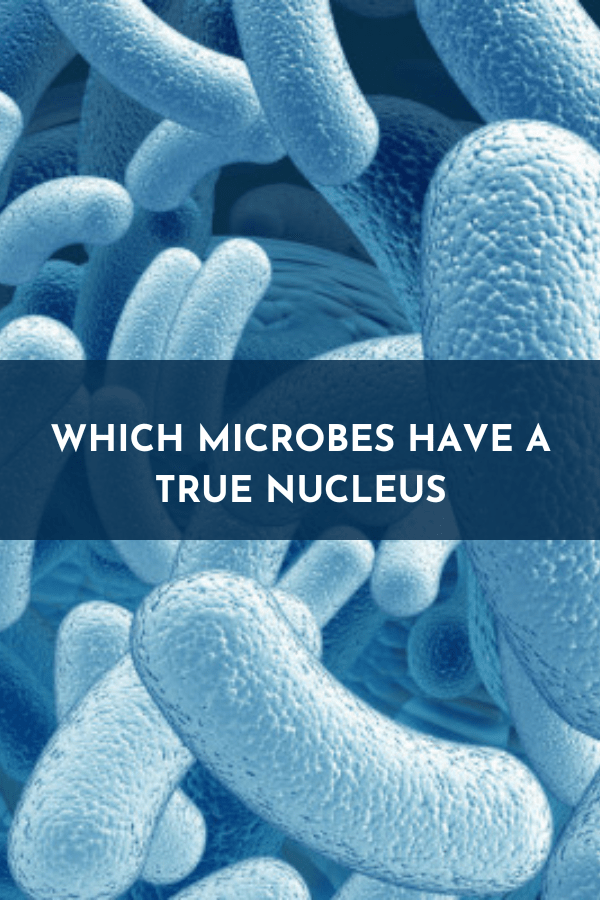Have you ever wondered which microorganism actually has a true nucleus or you’ve probably heard of the word “nucleus” so many times in relation to microbes but still cannot detect its function in a microorganism?
Well, you don’t have to worry anymore because that is what we are going to emphasize in a moment.

What is a microbe?
A microorganism or microbe is an organism that is too small to be seen with the naked eye except with the aid of a microscope.
Microbes can be Unicellular (single-celled) or Multicellular (multiple cells). On that note, we will take a look at the major keyword used above which is cell.
A cell is the smallest, functional and basic unit of life that is capable of supporting all of life’s processes.
Also, a cell has major constituents embedded in it which work hand in hand to carry out different functions in the cell; these constituents are termed ORGANELLES.
Most of these organelles including the nucleus help to keep the cell active and working. They include;
- Mitochondria
- Cell membrane
- Nucleus
- Nucleolus
- Cytoplasm
- Endoplasmic reticulum
- Golgi bodies
- Ribosomes
- Lysosomes
- Vacuole
An interesting fact is that although all living things are composed of cells, the cells of animals differ from that of plants and that of micro-organisms because not all organelles present in the animal cell are present in the plant cell. This is the same for the cells of microorganisms.
Biologically cells can be further divided into two groups;
- Prokaryotic cells
- Eukaryotic cells
Prokaryotic cells (Greek of “pro’ means “before” and “karyon” represents “nucleus”). These are cells with a primordial nucleus or no nucleus.
They are not membrane-bound and their contents are not divided into compartments.
Eukaryotic cells (Greek of “Eu” means “true” and “karyon” means “nucleus”). These organisms have a true nucleus.
Their nuclei are membrane-bound and the membrane is a prominent part of the structure of many other organelles.
Now, back to the subject matter.
Read: Treatment of Heavy Growth of Staphylococcus Aureus
What is the nucleus?
The nucleus is an organelle in a cell responsible for the site of the repository for genetic information.
All prokaryotes do not have a nucleus but all eukaryotic cells have a true nucleus.
Microbes that have a true nucleus
- Protists: these organisms that are not animals, plants, or fungi. They are generally unicellular and are classified into protozoa.
- Fungi: They are also a large and diverse class of microorganisms that are unicellular as well. They are further subdivided into; yeasts, molds, mushrooms, rusts, smuts, and mildews.
Protists and fungi are microorganisms although unicellular in nature, possess eukaryotic cells.
Examples of protists with a true nucleus
- Amoebas;
- choanoflagellates; ciliates;
- Diatoms;
- Dinoflagellates;
- Giardia;
- Plasmodium (which causes malaria);
- Oomycetes
- slime molds.
Examples of fungi with a true nucleus
- Yeasts
- Smuts
- Mildews
- Rusts
Also, read Monkey Pox Fact Sheet
Conclusion
We can now be able to confidently distinguish prokaryotes from eukaryotes.
I hope this was helpful.
Also, read
